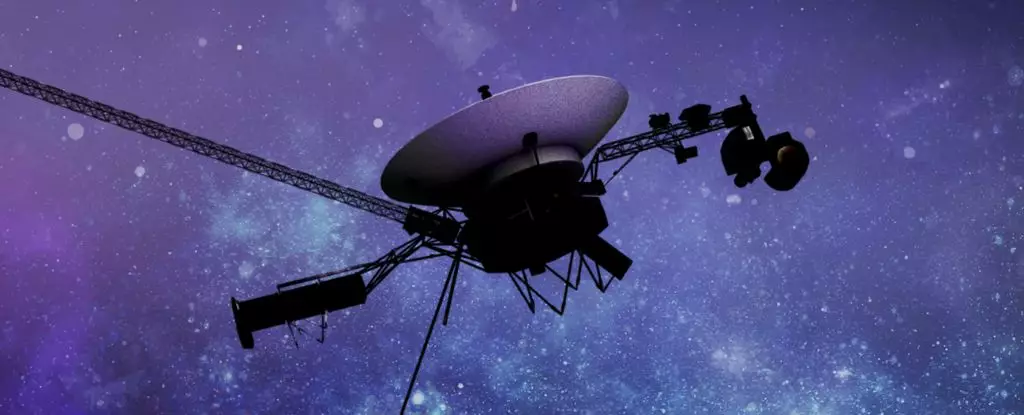After months of sending back incomprehensible data, Voyager 1, the most distant human-made object from Earth, has finally resumed normal science operations. Located 24 billion kilometers away in interstellar space, the probe has once again become a vital link for scientists at NASA to study the borderlands of our Solar System.
The sudden issue with Voyager 1’s data transmissions in November 2023 was traced back to a corrupted chip in the probe’s memory system. The outdated technology on board presented a unique challenge for NASA engineers, who had to consult manuals from the 1970s to address the problem. Eventually, on May 19, two of the four science instruments on Voyager 1 were successfully restored to send usable data back to Earth, marking a significant breakthrough in troubleshooting efforts.
Voyager 1, along with its counterpart Voyager 2, is venturing into a region of space never before explored by human-made spacecraft. These probes serve as the primary means for scientists to directly study the interstellar medium, providing valuable insights into the structure and extent of our Solar System. Despite common misconceptions that the Voyager probes have completely left our Solar System, they have only surpassed the heliopause and are yet to reach the hypothesized Oort cloud, the outermost region of our gravitational system.
As Voyager 1 continues its journey towards the Oort cloud, its aging power generators pose a significant challenge to its longevity. Engineers predict that the probe may still have one functioning instrument by 2025, with tentative communications through NASA’s Deep Space Network up to 2036. However, the ultimate lifespan of Voyager 1 depends on the remaining power reserves and the effectiveness of ongoing maintenance efforts.
In addition to the recent data transmission issues, Voyager 1 has exhibited other signs of aging in recent years. A malfunctioning computer in 2022 caused delays in outgoing messages, highlighting the strain on the probe’s systems. With radio messages taking approximately 22.5 hours to complete a round trip from Earth, the operational efficiency of Voyager 1 becomes increasingly critical as it ventures deeper into interstellar space.
The temporary loss of data transmission from Voyager 1 over the past six months poses questions about the potential research opportunities that might have been missed. The intermittent challenges faced by the probe underscore the delicate balance between technological resilience and the harsh conditions of deep space exploration.
The recent reconnection of Voyager 1 to the deep space radio network represents a significant milestone in our ongoing quest to explore and understand the mysteries of interstellar space. Despite the technical setbacks and uncertainties surrounding its future operations, the enduring legacy of Voyager 1 continues to inspire curiosity and fascination with the boundless possibilities of space exploration.


Leave a Reply